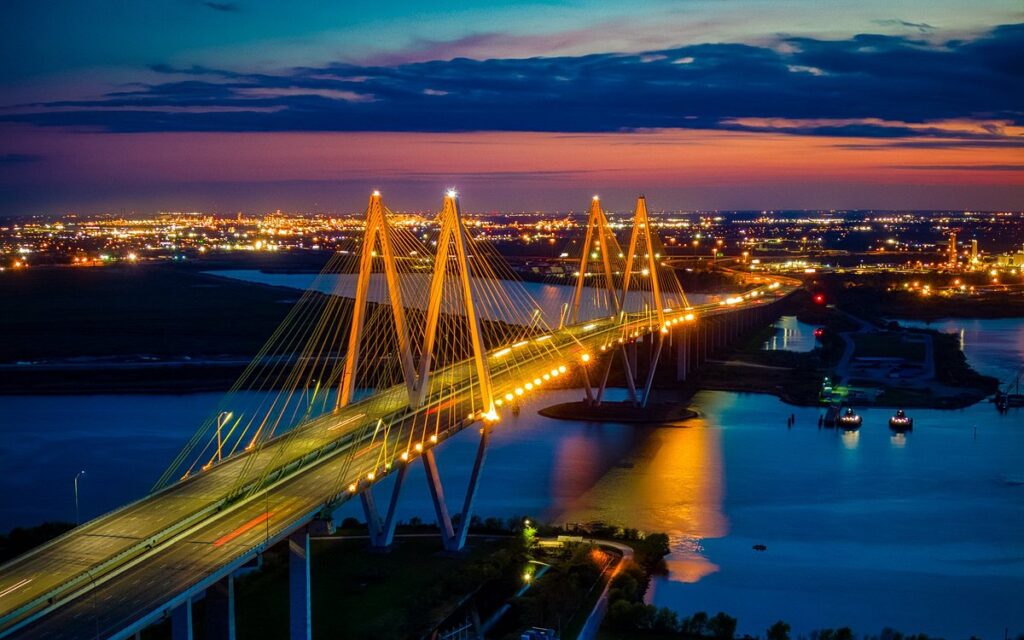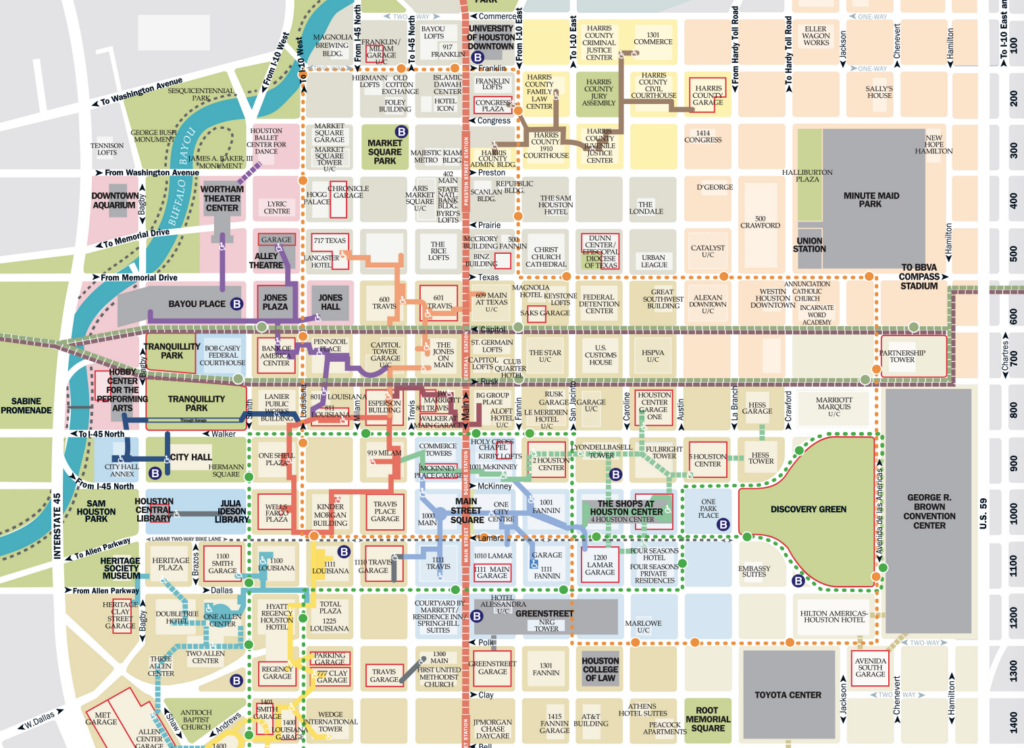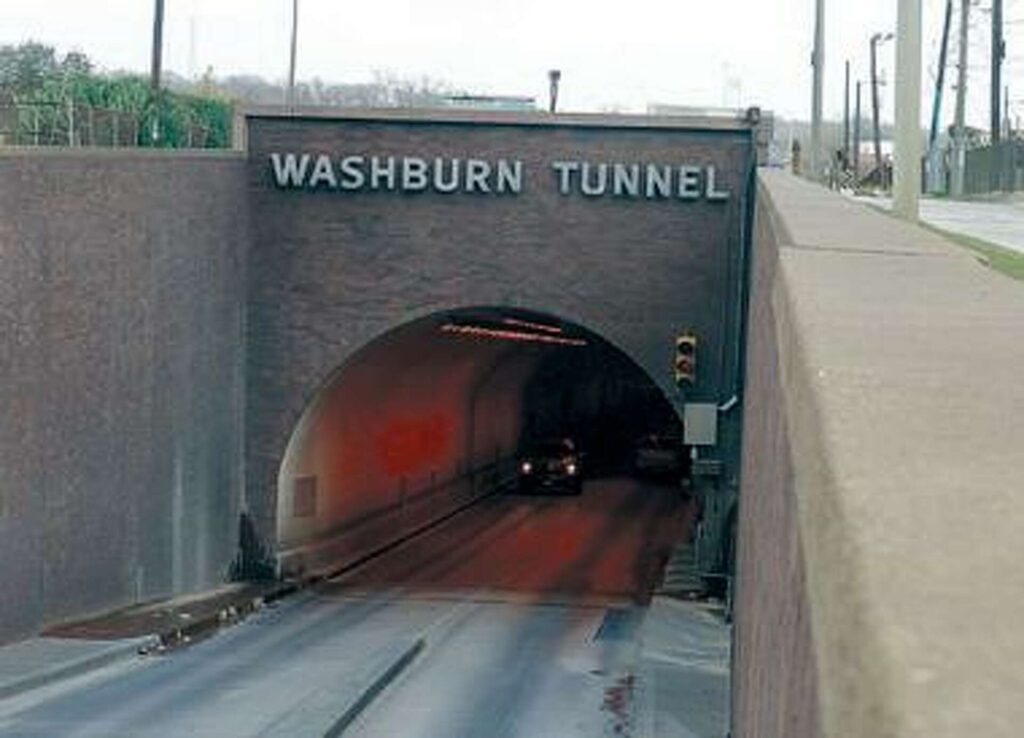
A City Defined by Innovation and Connectivity
Houston, one of the largest cities in the United States, is known for its pioneering spirit and robust infrastructure. The city’s network of bridges and tunnels has been essential for connecting its diverse neighborhoods, facilitating economic growth, and supporting its status as a major transportation hub. These engineering marvels highlight Houston’s commitment to innovation and efficient urban development.
Iconic Bridges That Define Houston
The Fred Hartman Bridge: A Modern Marvel
The Fred Hartman Bridge, spanning the Houston Ship Channel, is a prime example of advanced engineering in Texas. Opened in 1995, this cable-stayed bridge stretches 2.6 miles and serves as a critical link between Baytown and La Porte. It is celebrated for its elegant design, featuring two diamond-shaped towers that support a complex network of cables. The bridge’s construction was essential for improving traffic flow and supporting the bustling industrial activities along the channel.

The Waugh Drive Bridge: A Unique Urban Habitat
The Waugh Drive Bridge is not just a bridge but also a habitat for over 250,000 Mexican free-tailed bats. Constructed in 1954, it is a beloved landmark, attracting both locals and tourists who gather at dusk to witness the dramatic emergence of bats. This bridge symbolizes how infrastructure can coexist with urban wildlife, adding a unique element to Houston’s cityscape.

Tunnels That Keep Houston Moving
The Houston Downtown Tunnel System: A Subterranean City
Few cities can boast an underground network as vast as Houston’s Downtown Tunnel System. Spanning approximately 6 miles, this network connects major office buildings, retail stores, and food courts, allowing thousands of workers to move comfortably between buildings without exposure to the city’s sweltering summer heat. Originally developed in the 1930s to connect two theaters, the system has expanded significantly, showcasing Houston’s adaptability and growth over the decades.

The Washburn Tunnel: A Vital Passage Under the Ship Channel
The Washburn Tunnel is another critical engineering achievement in Houston, connecting Galena Park and Pasadena. Opened in 1950, this 2,936-foot tunnel is the only underwater vehicular tunnel in Texas and remains an important route for daily commuters. Its construction was groundbreaking at the time, demonstrating Houston’s dedication to solving transportation challenges with innovative solutions.

The Engineering Challenges and Solutions
Building bridges and tunnels in Houston comes with unique challenges due to the city’s proximity to the Gulf Coast, which means dealing with unstable soil and high water tables. Engineers have had to develop solutions that ensure these structures withstand heavy rainfall, flooding, and shifting ground conditions. For example, the design of the Fred Hartman Bridge incorporated deep foundations to anchor the structure firmly, preventing potential damage from environmental factors.
Moreover, the Downtown Tunnel System required careful planning to avoid underground utilities and maintain the integrity of surrounding buildings. This network exemplifies urban engineering that prioritizes both functionality and sustainability.
Future Prospects: Expansion and Sustainability
Houston continues to invest in its infrastructure with future projects focused on sustainability and resilience. Plans for new bridges emphasize not only structural integrity but also environmental impact, ensuring that wildlife and natural habitats are considered. Modern technologies are being employed to monitor existing structures for maintenance needs, helping prevent damage and extend their lifespans.
Tunnels and bridges remain essential for keeping Houston’s economy thriving, allowing for smooth transportation of goods and people across the city. The continued development and maintenance of these structures are vital to the city’s commitment to growth and innovation.